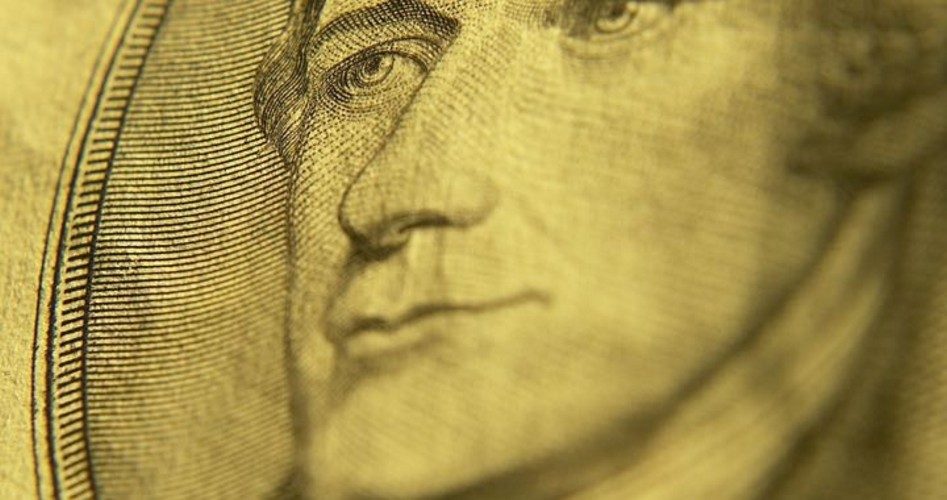
The White House just officially announced the final numbers for Fiscal Year 2018, which ended September 30. They are ugly: The gap between revenues and spending widened to $779 billion over the previous year, a jump of $113 billion (or 17 percent), despite increased revenues. This is the third consecutive year of rising deficits, with no apparent end in sight.
The White House blamed the usual suspects: the rising costs of “entitlement” benefits (i.e., Social Security, Medicare, Medicaid, and others) and increasing interest costs to service the rising national debt.
Those interest costs increased by one-quarter this year over last, from $263 billion in 2017 to $325 billion in 2018. By 2020, the Congressional Budget Office (CBO) estimates that interest costs will increase by another 50 percent, to nearly $500 billion.
There is no more talk of how the expanding economy will throw off revenues sufficient to start shrinking the national debt. Now, according to Office of Management and Budget (OMB) Director Mick Mulvaney, the best that can be hoped for is some eventual shrinking of the government’s annual deficits:
America’s booming economy will create increased government revenues. But this fiscal picture is a blunt warning to Congress of the dire consequences of irresponsible and unnecessary spending.
Going forward, President Trump and this Administration will continue to work with Congress to make the difficult choices needed to bring fiscal restraint, which, when matched with increasing revenue, will reduce our deficit.
The CBO begs to differ. In April, the nonpartisan group projected a $1 trillion deficit in fiscal year 2020, two years from now, and nearly doubling to $1.9 trillion by 2028.
As far as that “irresponsible and unnecessary spending” that Mulvaney referred to, Congress’ hands are largely tied thanks to promises, commitments, and programs previous Congresses have enacted. Of the $4.2 trillion the government spent last year, six percent went to interest and 65 percent went to mandatory entitlement programs, leaving less than 30 percent to pay for everything else, i.e., military, education, etc.
And there’s precious little incentive even to cut any of those “discretionary” programs for at least two reasons: one, it’s an election year; and two, the real crisis isn’t likely to hit before the next 10 years, according to the Congressional Budget Office:
If nothing is done sooner, the crisis point could come in about another decade, when interest costs as a share of GDP (gross domestic product), federal revenue and outlays hit their highest levels in modern times, and the Medicare and Social Security trust funds begin to reach their breaking points.
That’s 10 years from today, or 2028. According to the Congressional Research Service (CRS), “The average years of service for Members of the 115th Congress, as of January 3, 2017, when that Congress convened, was 9.4 years for the House and 10.1 years for the Senate.” How convenient is that? Just when the crisis hits in 10 years, at least half of those members of Congress now in office will either be retired, dead, or behind bars.
And none of this analysis by the CBO bakes into its cake the likelihood of a recession, which would likely cut severely those anticipated and greatly needed revenues.
This is why David Stockman, President Ronald Reagan’s Director of the OMB, quit in disgust. In his book The Triumph of Politics: Why the Reagan Revolution Failed, Stockman criticized the failure of congressional Republicans to cut government spending in order to offset the loss of tax revenues under Reaganomics. This resulted in the national debt nearly doubling during his brief four and a half year tenure as OMB director.
If the past is prologue, then OMB Director Mulvaney is facing the same challenge: nowhere to cut and no interest in doing so even if there were places to cut sufficient to offset the coming rising deficits. With the national debt pushing $22 trillion, taxpayers could see the debt skyrocket to $30 trillion, $40 trillion, or even higher before that “crisis point” is reached.
Speculation abounds as to what happens next. One school of forecasting predicts that bondholders will no longer be interested in buying U.S. government debt for fear of default. At that point the Federal Reserve will “reluctantly” step into the breach and start buying the increasingly worthless paper from the U.S. Treasury, setting off the ultimate solution to the national debt crisis: default through inflation.
Photo: Clipart.com
An Ivy League graduate and former investment advisor, Bob is a regular contributor to The New American magazine and blogs frequently at LightFromTheRight.com, primarily on economics and politics. He can be reached at [email protected].



